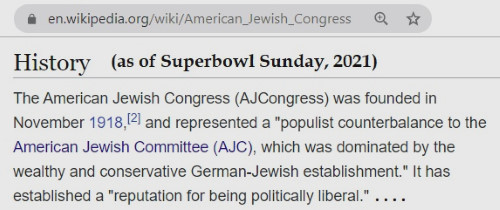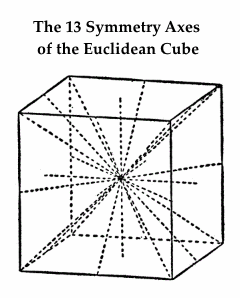“Before time began, there was the Cube.”
— Hassenfeld Brothers cinematic merchandising slogan



The opening lines of Eliot's Four Quartets —
"Time present and time past
Are both perhaps present in time future,
And time future contained in time past."
Perhaps.
Those who prefer geometry to rhetoric may also prefer
to Eliot's lines the immortal opening of the Transformers saga —
"Before time began, there was the Cube."
One version of the Cube —
"When things go bonkers, you have to adapt."
— Chris Hemsworth as Dementus in "Furiosa" (2024)
"Before time began, there was the Cube."
— Optimus Prime in "Transformers" (2007)
Today, an animated Transformers opens, with
Chris Hemsworth as the voice of Optimus Prime.
Also today: The new tag "Cubehenge" in this journal.
"Before time began, there was the Cube." — Optimus Prime in "Transformers"
This journal at 9 PM ET March 17, 2023 —
The use of binary coordinate systems as a conceptual tool
Natural physical transformations of square or cubical arrays
of actual physical cubes (i.e., building blocks) correspond to
natural algebraic transformations of vector spaces over GF(2).
This was apparently not previously known.
See "The Thing and I."
See as well today's post Geometry for Belgium.
From a 1964 recreational-mathematics essay —
Note that the first two triangle-dissections above are analogous to
mutually orthogonal Latin squares . This implies a connection to
affine transformations within Galois geometry. See triangle graphics
in this journal.

Update of 4:40 AM ET —
Other mystical figures —
"Before time began, there was the Cube."
— Optimus Prime in "Transformers" (Paramount, 2007)
"And, as with all retold tales that are in people's hearts,
there are only good and bad things and black and white
things and good and evil things and no in-between anywhere."
— John Steinbeck, author's epigraph to The Pearl
From the Season 4 finale of Westworld :
uploading Dolores's pearl at Hoover Dam —

For those who prefer greater theological simplicity . . .
Optimus Prime on a different Hoover Dam figure, that of
the AllSpark: "Before time began, there was the Cube."
Simplifying even more . . .
“A set having three members is a single thing
wholly constituted by its members but distinct from them.
After this, the theological doctrine of the Trinity as
‘three in one’ should be child’s play.”
– Max Black, Caveats and Critiques: Philosophical Essays
in Language, Logic, and Art , Cornell U. Press, 1975

As above, Black's theology forms a cube.
"Metaphor in language — the prime mover"
— George Steiner in Real Presences (1989)
Not so prime —
See also the "Transformers" marketing saga.
Related marketing:
Disney Easter eggs —
Miller died on February 7, 2021.
See that date in this journal —
“Before time began, there was the Cube.”
— Hassenfeld Brothers cinematic merchandising slogan.
Update at noon on Wednesday, June 9, 2021 —
Related material on Frye and deconstruction —
|
From "The First Major Theoretician? Northrop Frye Towards the end of his career, when it was clear that literary theory had taken hold in the academy, Frye began to reflect on literary theory. In an interview with Deanne Bogdan, Frye laments, “I am feeling out of the great critical trends today”…. Northrop Frye was right that he was “out of fashion,” both in terms of his own theories and his place in literary theory; however, he did seek to reverse the course. Frye hoped to reclaim literary studies from deconstruction, which had become, in a sense, his chief opponent …. |
Also on February Seventh —
Sunday, February 7, 2021
Transformers Continues.“Before time began, there was the Cube.” Et cetera . |
* A weblog motto. See …
http://enowning.blogspot.com/
2007/07/alfred-denkers-dictionary-on-ereignis.html.
That Ereignis post is dated July 3, 2007.
Related material for the Church of Synchronology —
"The deepest strain in a religion is the particular
and particularistic doctrine it asserts at its heart,
in the company of such pronouncements as
‘Thou shalt have no other Gods before me.’
Take the deepest strain of religion away…
and what remains are the surface pieties —
abstractions without substantive bite —
to which everyone will assent
because they are empty, insipid, and safe."
— Stanley Fish, quoted here on July 3, 2007…
The opening date of the film "Transformers."
The opening pronouncement of "Transformers" —
" … this beautiful love story . . . ."
An image from the previous post:
The above line "From the producer of Transformers " suggests
a story from March 18, 2019 . . .
Misreading the words of di Bonaventura
yields a phrase that might be applied to
the Church of Rome . . .
"A franchise based on release dates."
See dies natalis in this journal.
For the Church of Synchronology, see
the above di Bonaventura date, March 18.
Then there is the Church of Cubism . . .
"Before time began, there was the Cube."
— Optimus Prime, Transformers , 2007
The New Yorker reviewing "Bumblebee" —
"There is one reliable source for superhero sublimity,
and it’s all the more surprising that it’s a franchise with
no sacred inspiration whatsoever but, rather, of purely
and unabashedly mercantile origins: the 'Transformers'
series, based on a set of toys, in which Michael Bay’s
exhilarating filmmaking offers phantasmagorical textures
of an uncanny unconscious resonance."
— Richard Brody on December 29, 2018
"Before time began, there was the Cube."
— Optimus Prime
Some backstory — A Riddle for Davos, Jan. 22, 2014.
The Finkelstein Talisman —
"Before time began, there was the Cube."
— Optimus Prime in "Transformers" (Paramount, 2007)
Wikipedia on Hasbro —
Three American Jewish brothers,[6] Herman, Hillel, and Henry Hassenfeld[7]
founded Hassenfeld Brothers in Providence, Rhode Island in 1923 . . . .
The Hassenfeld Auction —
Also on September 16, 2015 —
The Hindman Image —
The Hood Warenkorb —
Under the Hood —
Megan Fox in "Transformers" (2007) —
This Way to the Egress —
The previous post, "Mind," suggests a search for "n+1" in this journal.
From that search —

The above psychoanalytic remarks suggest . . .
See also "Transformers" (2007).
"Before time began, there was the Cube."
— Optimus Prime
Why was the Cosmic Cube named the Tesseract
in the Marvel movie series? Is there any specific reason
for the name change? According to me, Cosmic Cube
seems a nice and cooler name.
— Asked March 14, 2013, by Dhwaneet Bhatt
At least it wasn't called 'The AllSpark.'
It's not out of the realm of possibility.
— Solemnity, March 14, 2013
Paul Krugman:
Asimov’s Foundation novels grounded my economics
In the Foundation novels of Isaac Asimov …
“The Prime Radiant can be adjusted to your mind, and all
corrections and additions can be made through mental rapport.
There will be nothing to indicate that the correction or addition
is yours. In all the history of the Plan there has been no
personalization. It is rather a creation of all of us together.
Do you understand?”
“Yes, Speaker!”
— Isaac Asimov, Second Foundation , Ch. 8: Seldon’s Plan

“Before time began, there was the Cube.“
See also Transformers in this journal.
Detail from the previous post —

See Space Cross in this journal.
See also Anthony Hopkins' new film
"Transformers: The Last Knight" and …
"For years, the AllSpark rested, sitting dormant
like a giant, useless art installation."
— Vinnie Mancuso at Collider.com yesterday
Related material —
Giant, useless art installation —
Sol LeWitt at MASS MoCA. See also LeWitt in this journal.
From a post of last Friday, June 2 —
See also Transformers in this journal.
"Before time began, there was the Cube."
— Transformers (2007)
Prequel —
Note that Yale's die design and use of the phrase "rigid motions"
differ from those in the webpage "Solomon's Cube."
"Before time began, there was the Cube." — Transformers (2007)
Plot summary — "An ancient struggle between two Cybertronian races,
the heroic Autobots and the evil Decepticons, comes to Earth, with
a clue to the ultimate power held by a teenager."
* A post suggested by J. D. Salinger's phrase "a fresh impetus"
in "Raise High the Roof Beam, Carpenters" (1955)
Transformations acting on Solomon's Cube
furnish a model of poetic order.
Some backstory for Hollywood —

"The deepest strain in a religion is
the particular and particularistic doctrine
it asserts at its heart,
in the company of such pronouncements as
‘Thou shalt have no other Gods before me.’
Take the deepest strain of religion away…
and what remains are the surface pieties —
abstractions without substantive bite —
to which everyone will assent
because they are empty, insipid, and safe."
— Stanley Fish, quoted here on July 3, 2007…
The opening date of the film "Transformers."
The opening pronouncement of "Transformers" —
"Before time began, there was the Cube."
Those who prefer Fish's abstractions may consult
the previous post.
The Log24 version (Nov. 9, 2005, and later posts) —
|
VERBUM
|
See also related material in the previous post, Transformers.
Powered by WordPress